You may not find this terribly rewarding unless you're included here, so this is a good time for casual and random browsers to turn back before they get too caught up in the sweep and majesty of the proceedings and can't let go.
We're off from Teyran, 29 December 2014. The Squirrel will keep watch over our stuff while we're gone.
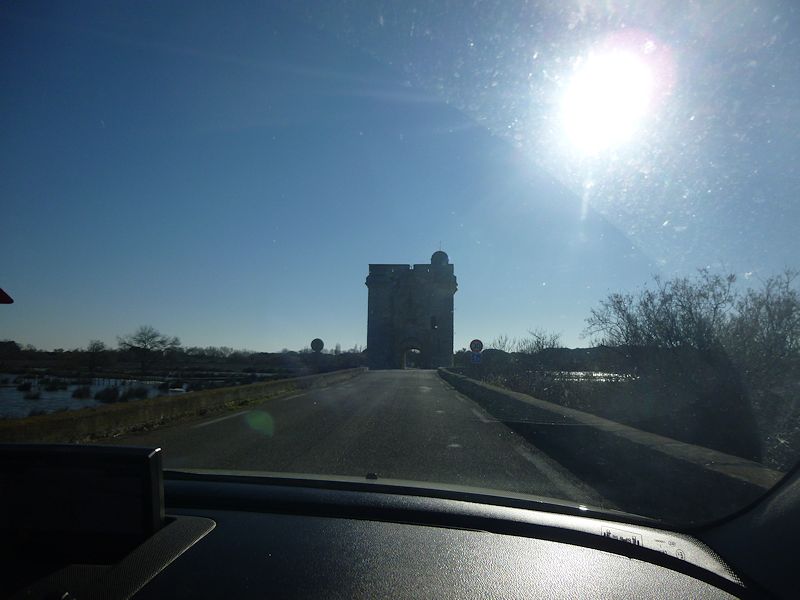
Once again, we're driving south out over the western Camargue delta, and here's a roadblock.
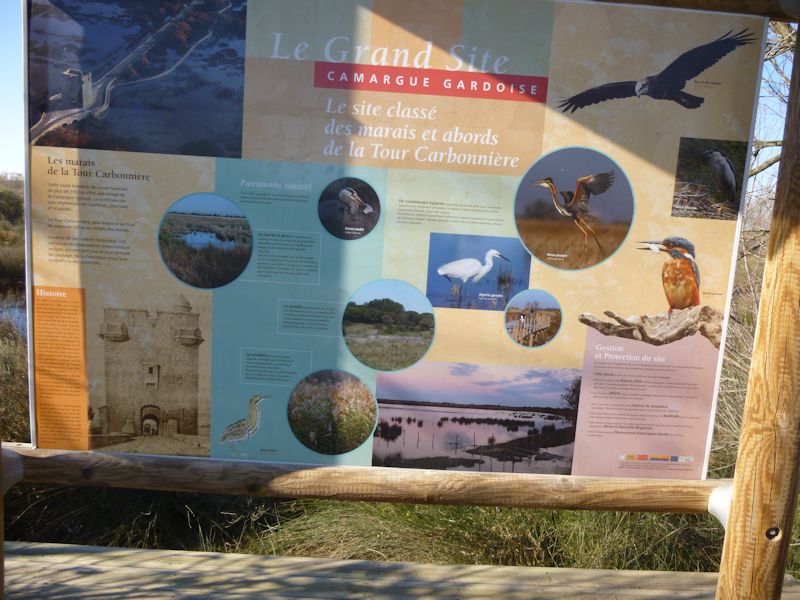
This is a bird sanctuary and historic tower in the Gard department of the Languedoc-Roussillion region, part of the Petite Camargue west of the Petit Rhône river -- it's all part of the huge delta of marshes and lagoons defined by the two branches of the Rhône as they meet the Med, the largest delta in western Europe; the Camargue proper is the area towards the Grand Rhône to the east.
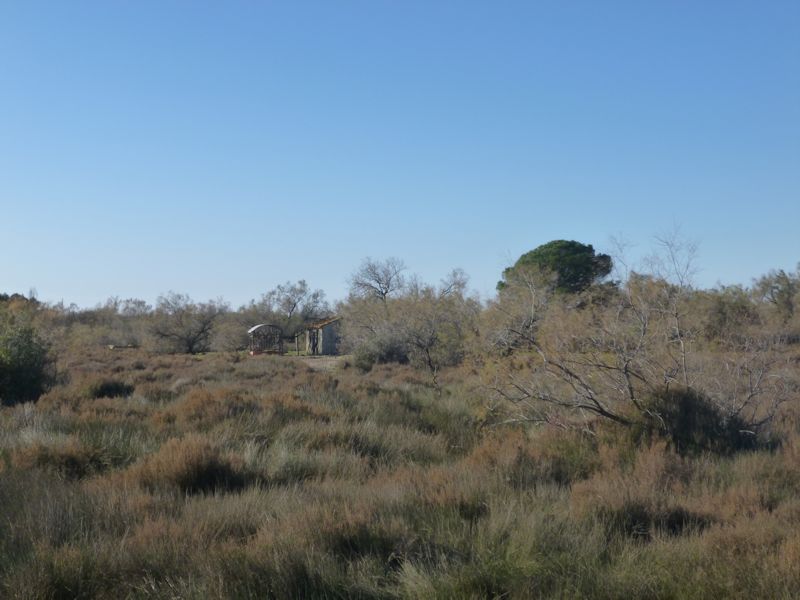
Some of the typical landscape of the Camargue, where people have been developing traditional ways of exploiting its resources for thousands of years, largely through drainage channels and salt pans. Few sizable towns have developed, the largest being Aigues-Mortes and then Saintes-Maries-de-le-Mer; the city of Arles to the north, near the separation of the two branches of the Rhône, has always been the region's administrative and economic magnet.

Instead, much of the economic activity has originally been in the hands of large monasteries and then, from early modern times onward, of the landowners of large estates who were based in Arles.

Traditionally the main products of the area, in addition to salt, have been the famous white horses, the 'Camarguais', the fighting bulls, Camargue rice, and of course nature tourism: there are over 400 species of birds to be found here (depending on the season), most notably the Greater Flamingo. The Camargue has been a Ramsar 'Wetland of International Importance' since 1986 and a collection of BirdLife International 'Important Bird Areas' since 2000.

A stroll along the boardwalk to the Tour Carbonnière

Kristin happily in the Camargue

The Tour Carbonnière is first attested from 1346, but was built as part of the fortifications of Aigues-Mortes in the 13th century. Standing athwart what was then the only road through the salt marshes to Aigues-Mortes, its purpose was both to provide a military early defense of the city from unwelcome visitors by land (it was called the 'Key to the Kingdom') and to perform toll booth duties by collecting the customs fees from passing merchants.

The tower was garrisoned by a castellan and four soldiers who admitted traffic along the road through a portcullis raised through the slot on the right. Four cannon could be supported on the roof. In 2009, the tower was improved and made safe for tourists, and the boardwalk along the road was laid on.

The roadway northward through Saint-Laurent-d'Aigouze to solid ground. Unsurprisingly, the tower was bitterly contested back and forth during the 16th century Wars of Religion.

The view from the parapet seaward to the south. The Canal du Rhône à Sète passes by just beyond the large meadows on the left.
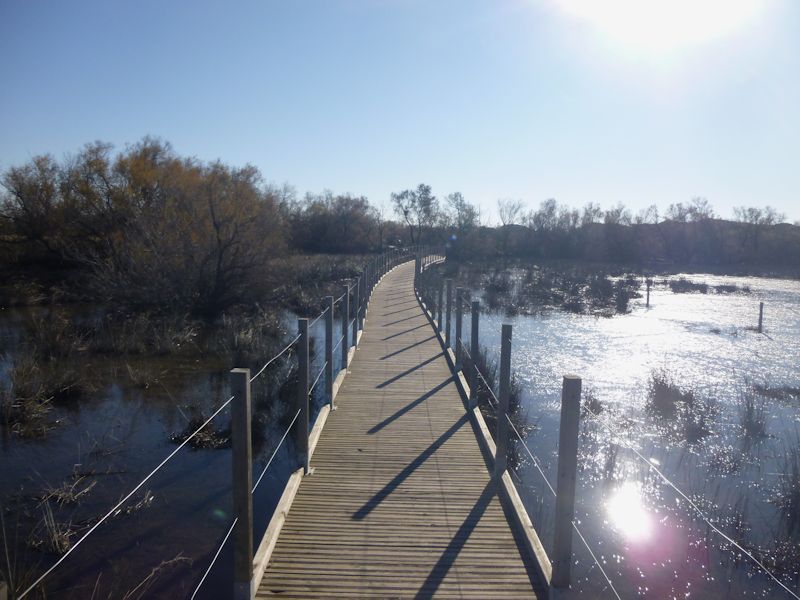
Our objective today is a visit to Saintes-Maries-de-la-Mer, a beach resort town on the Mediterranean, for a number of reasons.
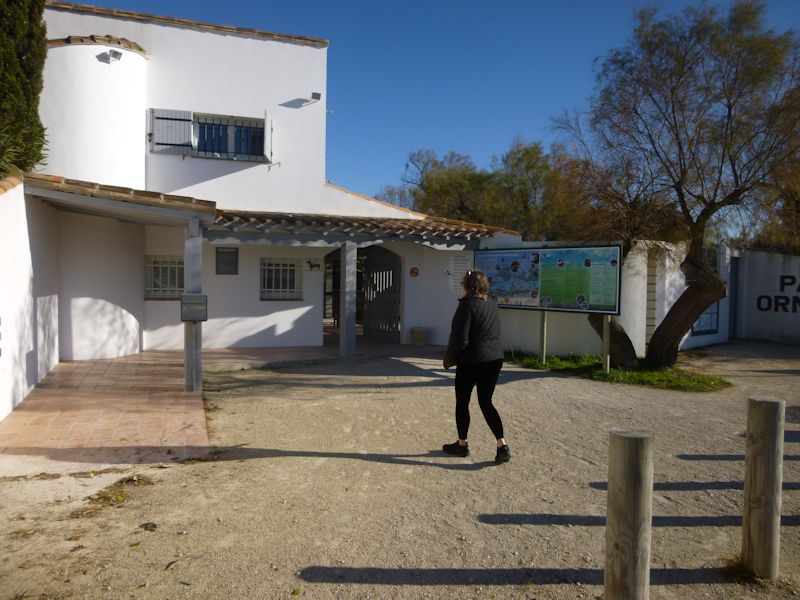
We're pausing at the Parc Ornithologique de Pont de Gau. Kristin's dreaming of a short stop-in to commune with any wintering birds that may be loitering here. Disappointingly, the "sentiers de découverte" are elaborate and well-constructed and that's not cheap, so correspondingly the entry fee only amortizes over several hours on the 'discovery trails'.

So, across the road, we'll buy some specialties of the terroir instead.

I'm standing chillily but contentedly about, waiting to carry plastic bags of rice, salt, and wine of the Camargue up the road to the car (in case they might not be available in our local supermarket).

White horses of the Camargue
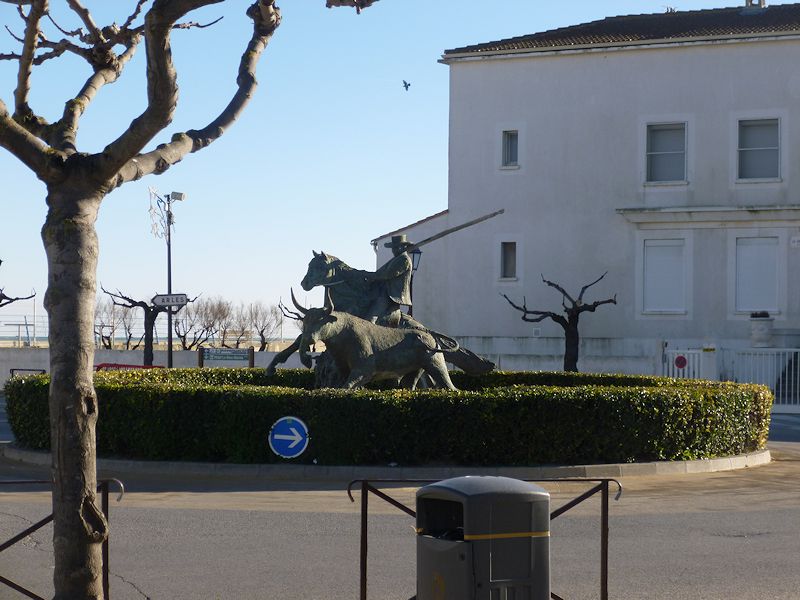
We arrive in Saintes-Maries-de-la-Mer on the Med, where they do take their bullfighting seriously.
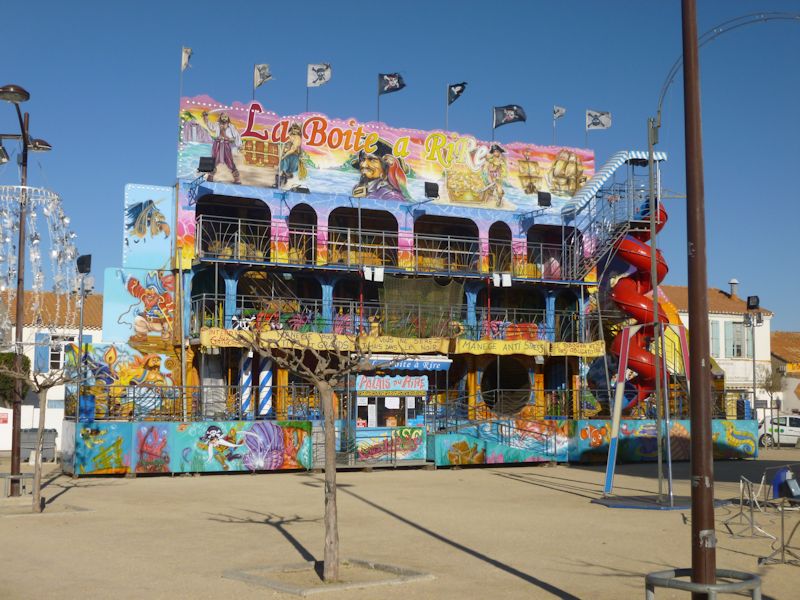
Festive. No, in this cold, not festive . . . but colorful. Saintes-Maries-de-la-Mer is surely worth a visit, even out of season, but for me it's a bit of an non-spiritual pilgrimage. The commune has an early and iconic place in the history of the modern conservation of wetlands, so I've always wondered what it would look like.

I'll take the liberty of quoting here from the Manual of the Ramsar Convention on Wetlands (5th ed., 2011) (it's not plagiarism, I wrote it):
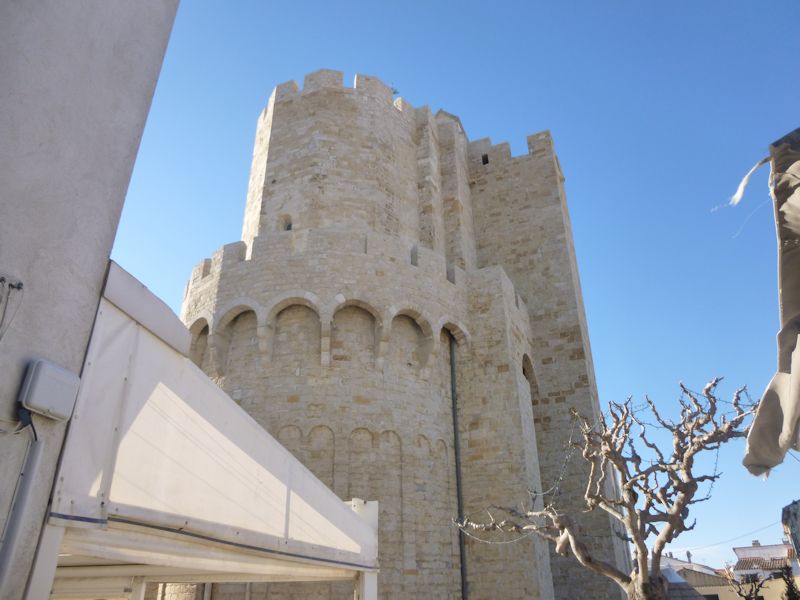
So here we are at last. The commune of about 2,500 residents, bulging upward by a factor of about 20 (i.e., to 50,000+) in summer, is the capital of the Camargue in the Bouches-du-Rhône department.
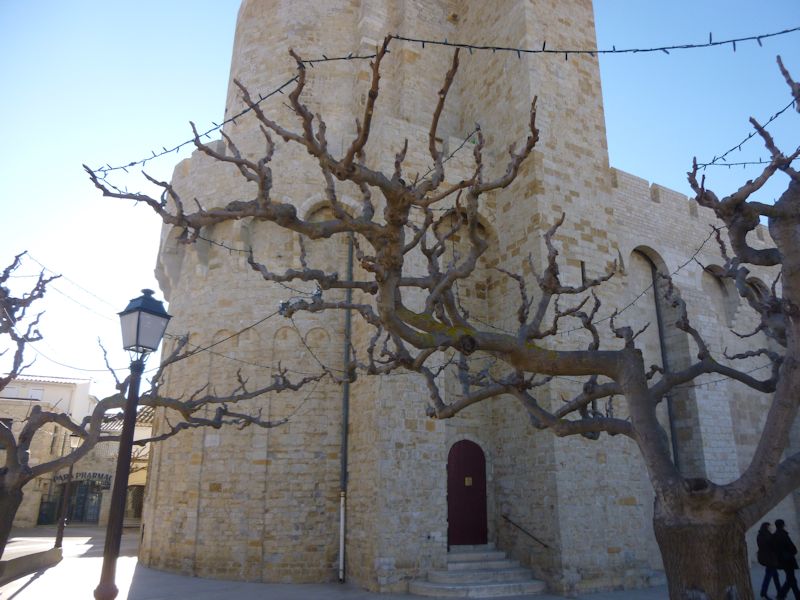
A village is attested here from the 4th century, and in 542 the Bishop of Arles, St Caesarius, mentioned a church to the Virgin Mary on the spot. Alongside the original church, venerated because of the legends of the Saintes Maries, a stoutly fortified church was built up over the 800s to 1100s and served as a convenient safe haven for the locals during Viking and Saracen raids along the coast.

In 1448, we're told, René of Anjou, Count of Provence and other properties, and called the King of Naples though that didn't work out so well (and brother-in-law of King Charles VII of France and father of Henry VI of England's wife Margaret) ordered up excavations to find the bodies of the sainted ladies -- successfully, as it turned out (of course) -- and tore down the old church in favor of a sanctuary for the relics in the new one.
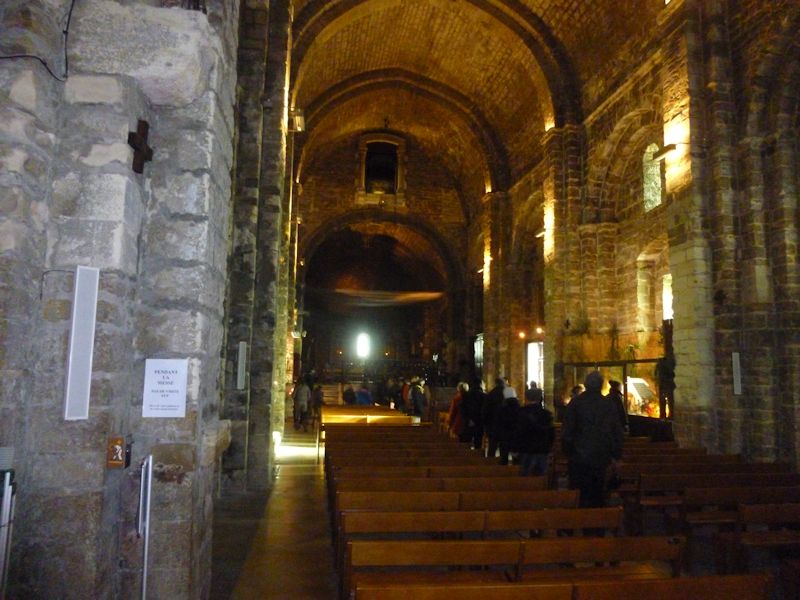
A homey single nave 15 metres high, with, above the apse and choir, a semicircular donjon or keep, with a guards' room and a fortified roof over the tower and the nave as well.

A rampart runs round the roof, fully embattled for the defense of the building and the population presumably huddled within. There was even a freshwater well inside the church for the odd siege.

Here are the Saintes Maries -- legendarily speaking, two of the four Marys mentioned in the Gospels, sometimes in rather confusing and semi-identifiable ways. There was the Virgin Mary, mother of Jesus, of course, and Mary of Magdala, who was a close follower of Jesus and supposedly the first to be allowed to see him after the Resurrection. These are the other two.
One, called Marie-Salomé here, identified with Mary of Bethany and the wife of Zebedee, was known as the mother of the apostles James the Greater and John the Evangelist. Marie-Jacobé, or Marie de Cleophas, from Nazareth, was considered to have been the mother of the apostles James the Lesser and Joseph. They were said to have been amongst those grieving at the foot of the cross and, after the Resurrection, amongst those spreading the word about Jesus in the region.
According to some legends, fleeing persecution a few years later, these two, with Mary Magdalene, Marie-Salomé's siblings Martha and Lazarus (the raised-from-the-dead guy), and other disciples, took off from the Holy Land (or Egypt) in a ship with neither sails nor oars and ended up here. These two Marys stayed, the others drifted on to land elsewhere and spread the Good Word throughout the Provence.

There were also medieval legends of 'The Three Marys' (these two plus the Magdalene), both before and after the crucifixion of Jesus, which may have influenced Wikipedia's article (as of February 2015) on Saintes-Maries-de-la-Mer in apparently assuming that all three of them landed here, rather than just the two as shown in the boat above. In the illustration in this photo, in addition to the two Marys and a helpful angel (who needs oars?), there is their Egyptian servant 'Sara la Noire' ('the Black') . . .

. . . which is a whole 'nother story. In addition to the festival processions with the relics and huge statues of the two Marys, there is also an annual pilgrimage festival in May for Sara the Black drawing Gypsies, Roma, Tsiganes, Gitans from all over Europe to venerate Sara as their own saint in a week or more of processions, baptisms of their newest additions, and parties.
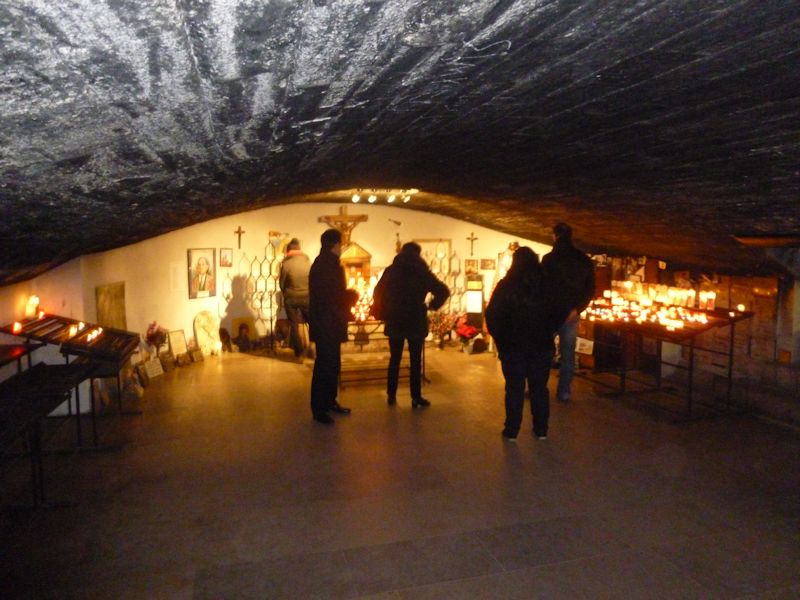
Beneath the altar, there is the crypt. With relics! And a statue of Sara as well.
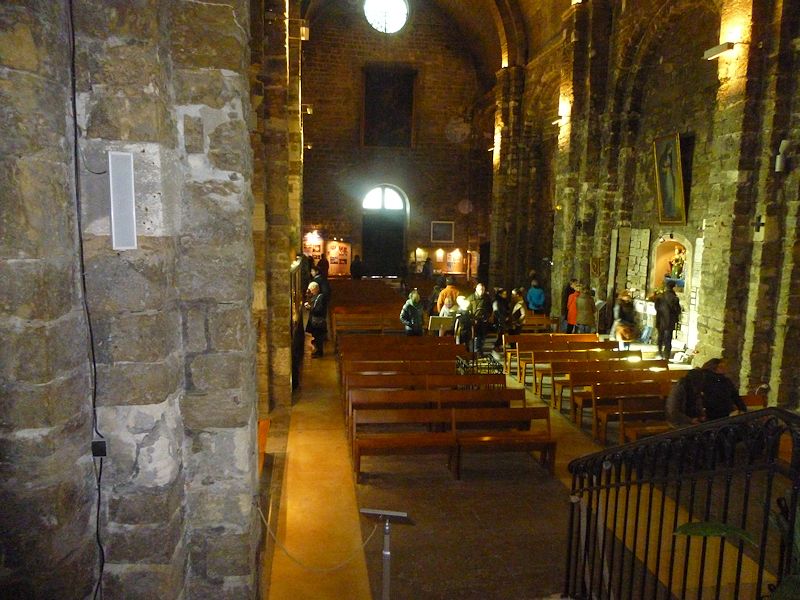
The nave from the upper altar

A look at the front end of the fortified church of Saintes-Maries-de-la-Mer
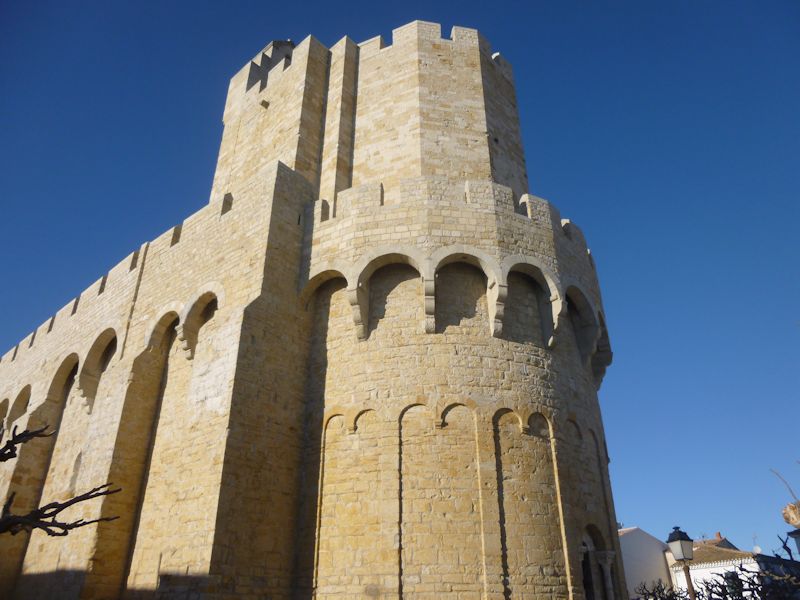
And back around to the apse end
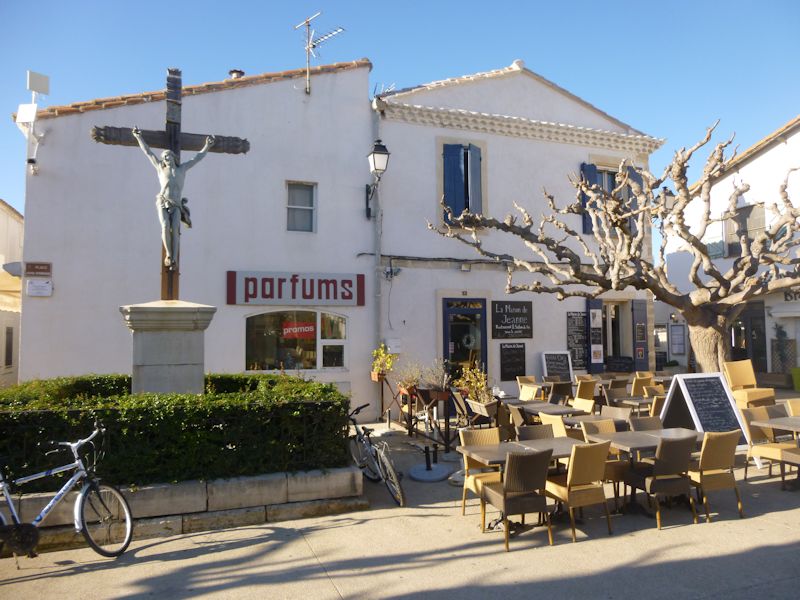
At the Maison de Jeanne salon de thé 'under the mulberry bush', you can enjoy a little something and contemplate the crucifixion again.

Walkabout in Saintes-Maries-de-la-Mer. Kristin's off trying out some of the lunchtime specialties of the terroir, so I'm just snapping off photographs wherever.
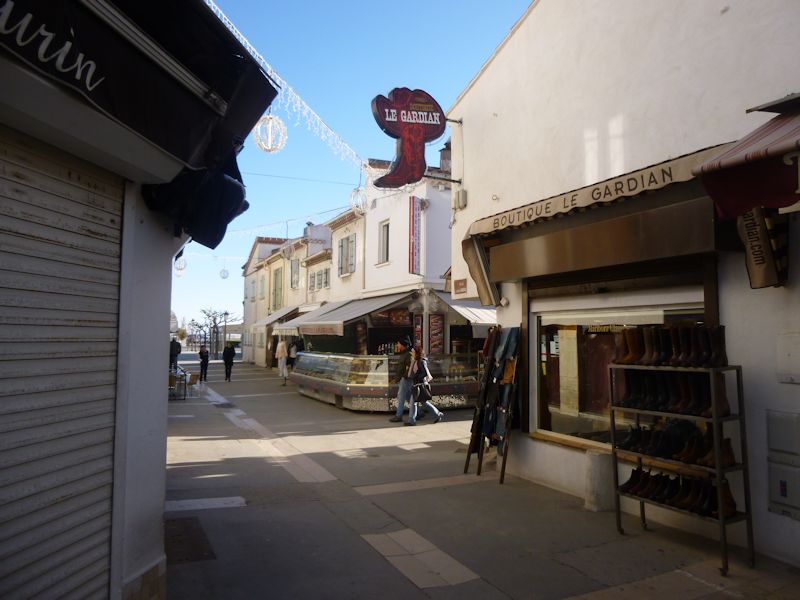
The 'gardians' are the colorful local equivalent of cowboys, who ride the white horses of the Camargue and raise the fierce bulls as well as sheep out on the flat lands.

The town hall at the town centre

Local shops, etc.
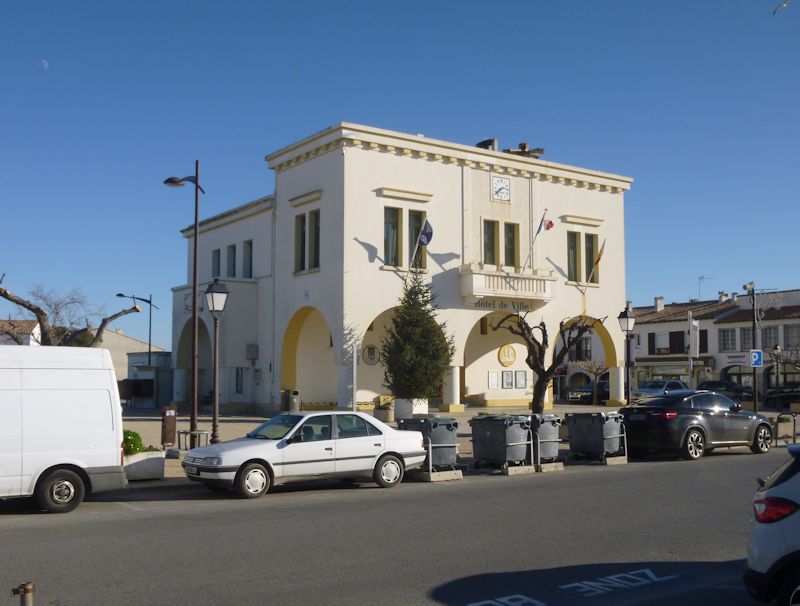
The hôtel de ville or town hall

A bustling beach town teeming with fun-loving vacationers, without the vacationers. (I'm very familiar with Seaside Heights, New Jersey, and I've seen that in the off-season, too.)

A town that takes its bullfighting seriously

Trying to link up with Kristin at one of these streetside restaurants -- I'm only troubling myself to search for the ones that advertise oysters (les huitres), but that's most of them.
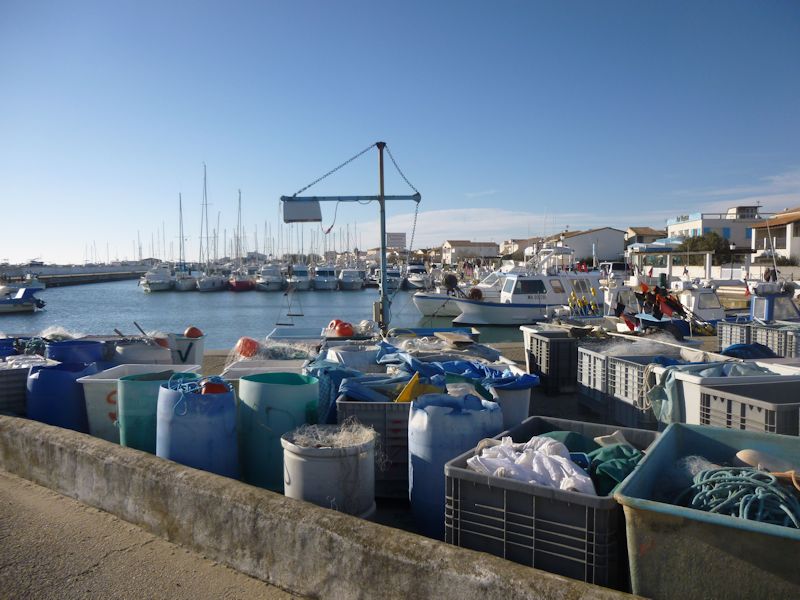
Indeed, there's evidently a lively seafood industry here, as well as pleasure boating.

Fishing gear (I think)

Like Seaside Heights, NJ, in the early '60s, but without the Wild Mouse on the Casino Pier (but with fresh oysters, and bull sausages)

A town that venerates, not only its Saint Mary statues, but also its bullfighting

The Camargue Message: flamingos, white horses, and Fighting Bulls!

That's no Wild Mouse. And no kids on it, either. It's really cold here today.
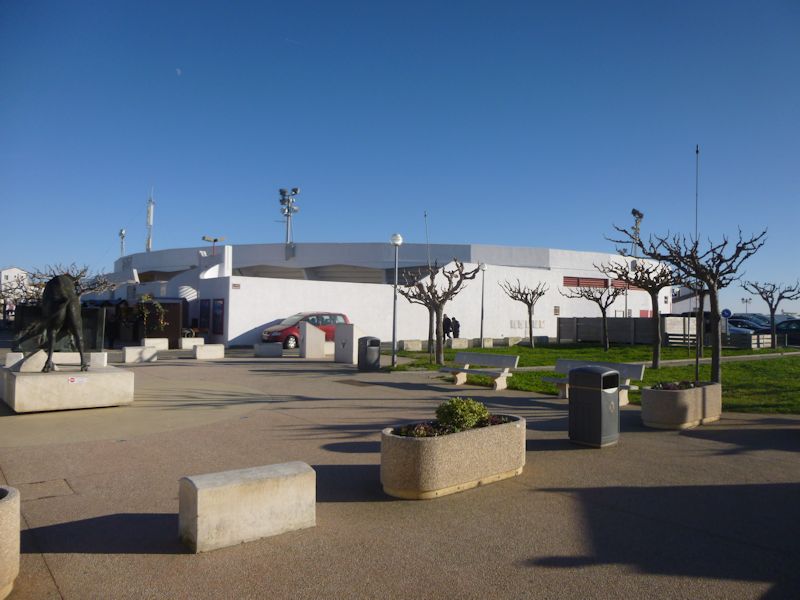
Not only do we take our bullfighting seriously . . . we've got our own seaside arena.
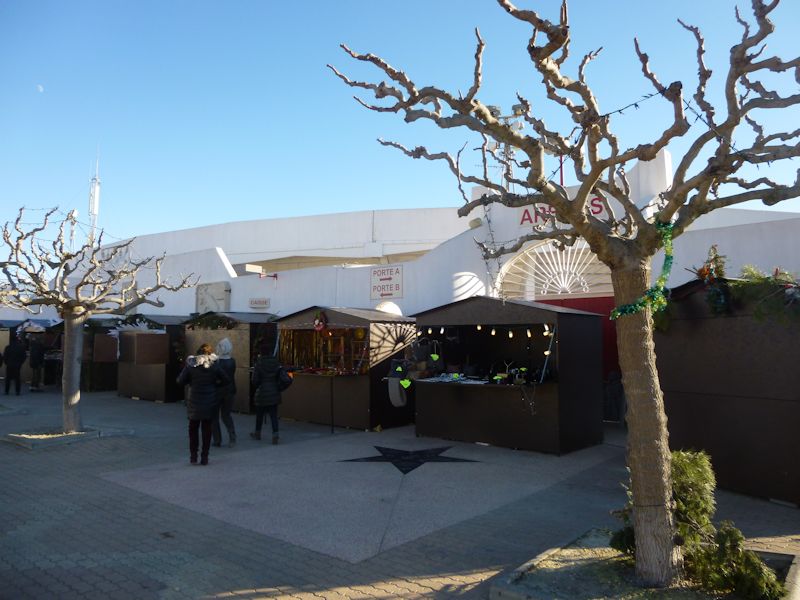
There's something's going on in there. Let it not be bullfighting, please.
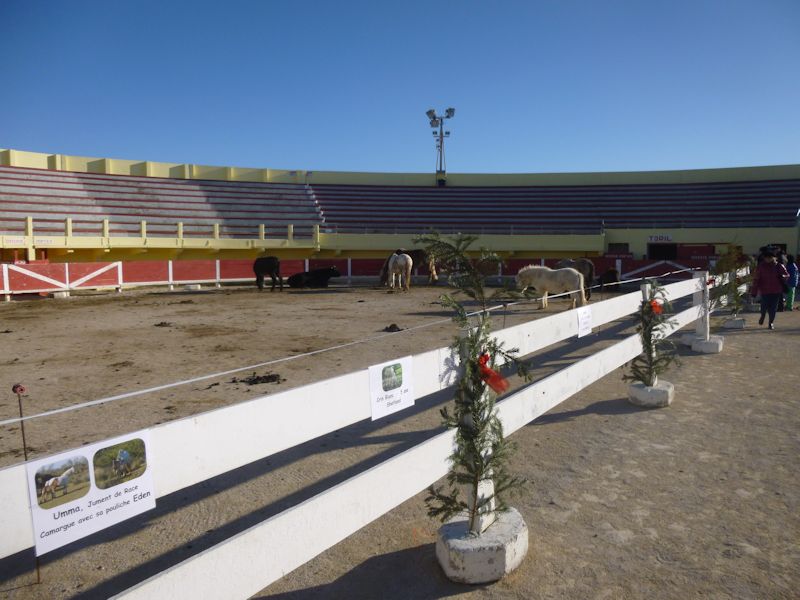
It's out of season for bulls, perhaps. But not for white horses.
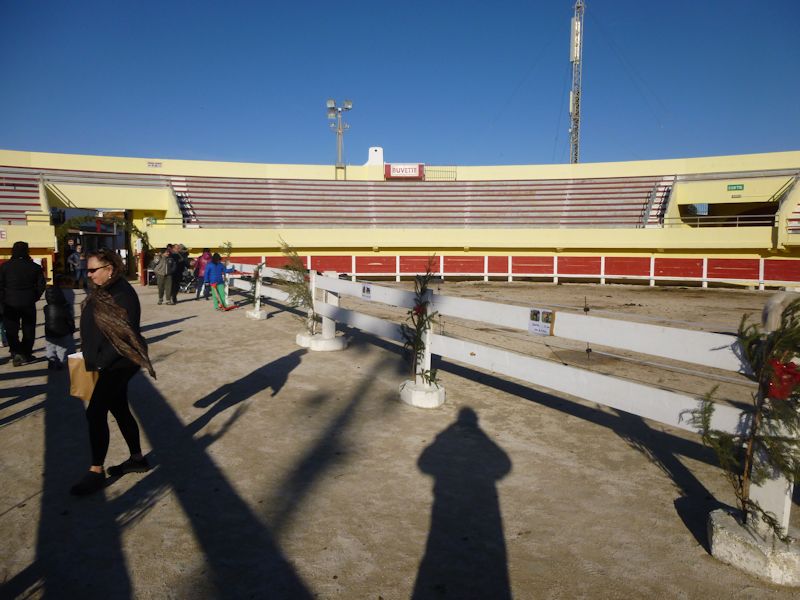
Must be alive with Enthusiasm when the bulls are on the loose, but for now, there's just us and some Christmas decorations.

And some little goats or whatever they are. Kristin loves nothing so much as little goats. Except marmots; and harbor seals; kitties, of course; and . . . .
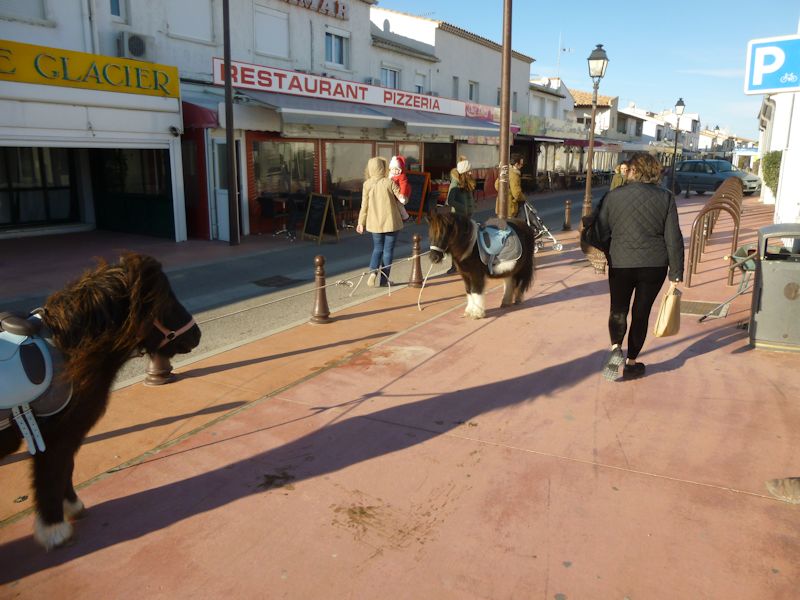
. . . but not dwarf ponies with saddles on, apparently.
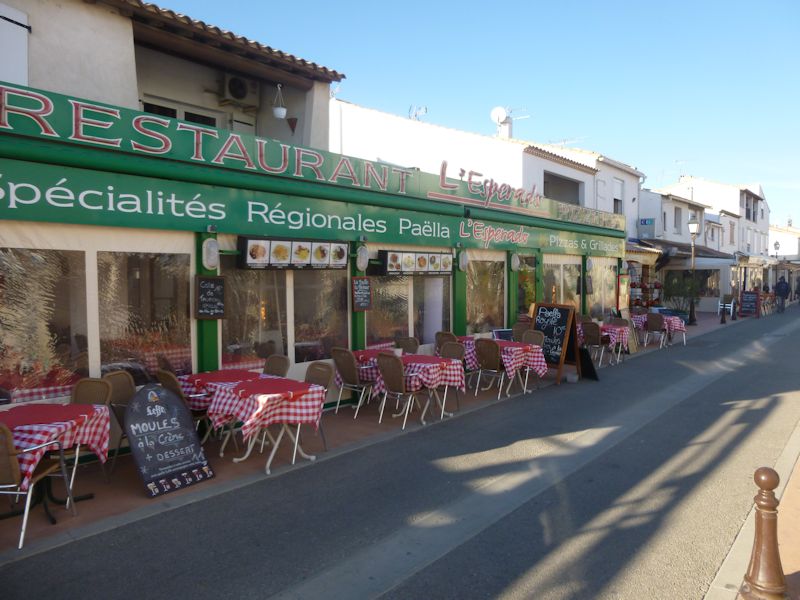
Street scene

Next to the Italian Tavern, featuring mussels, bulls, fish . . . you name it.

Restaurant Chez Vito, specializing mostly in tapas, and the Vito's Burger.

Street scene with fortified church

A chance for Kristin to view the amazing church-fortress

One collects one's own photos of European tourist road-trains, but sensibly there are no trains operating out here just now, just this placard (with a photo of a Dotto Euro 5 'Muson River' model, with a white horse).

The Mediterranean beaches of Saintes-Maries-de-la-Mer

The fortress-church, and now . . .

. . . the road around the biggest lagoons northeastward towards Arles.
 Dwight Peck's personal website
Dwight Peck's personal website































































